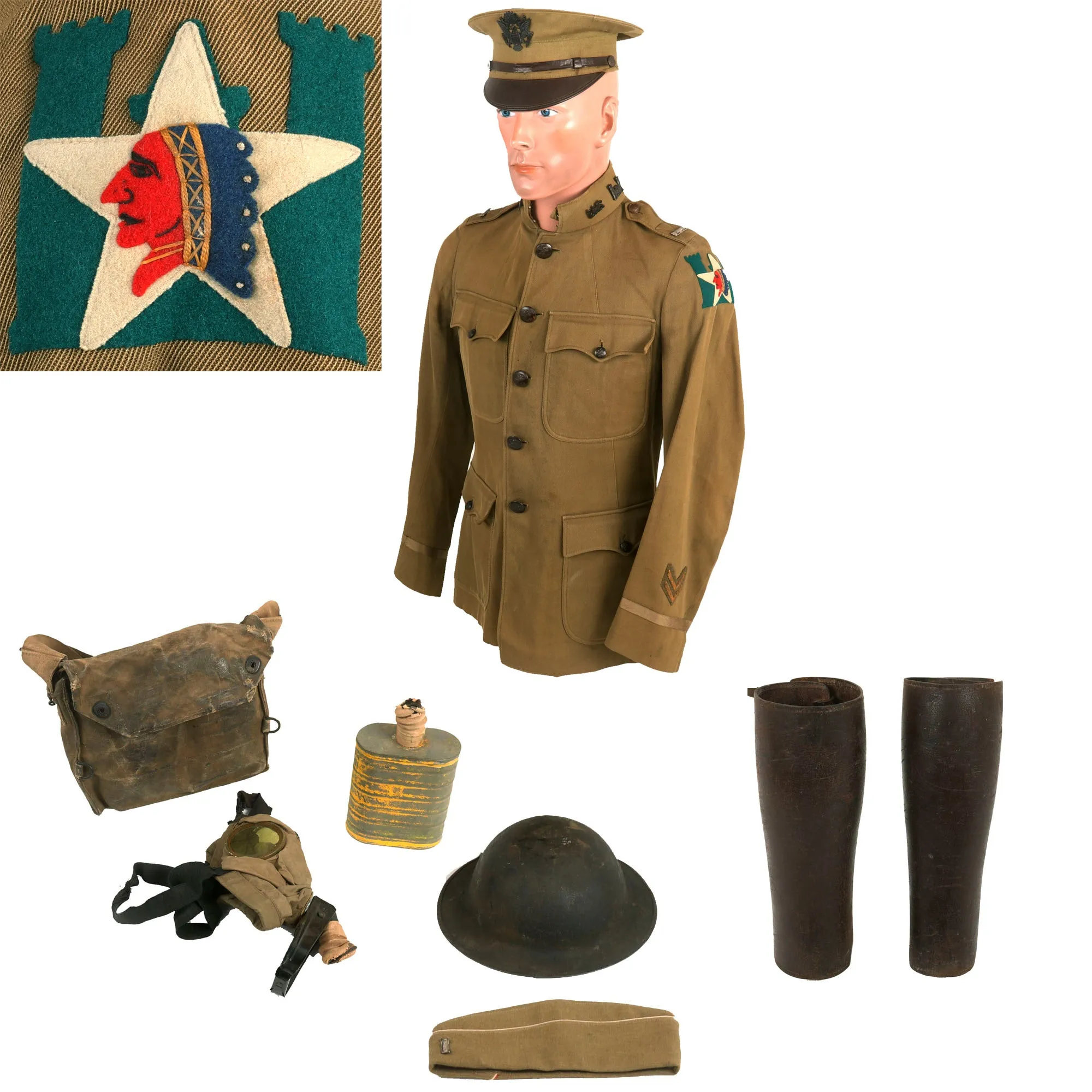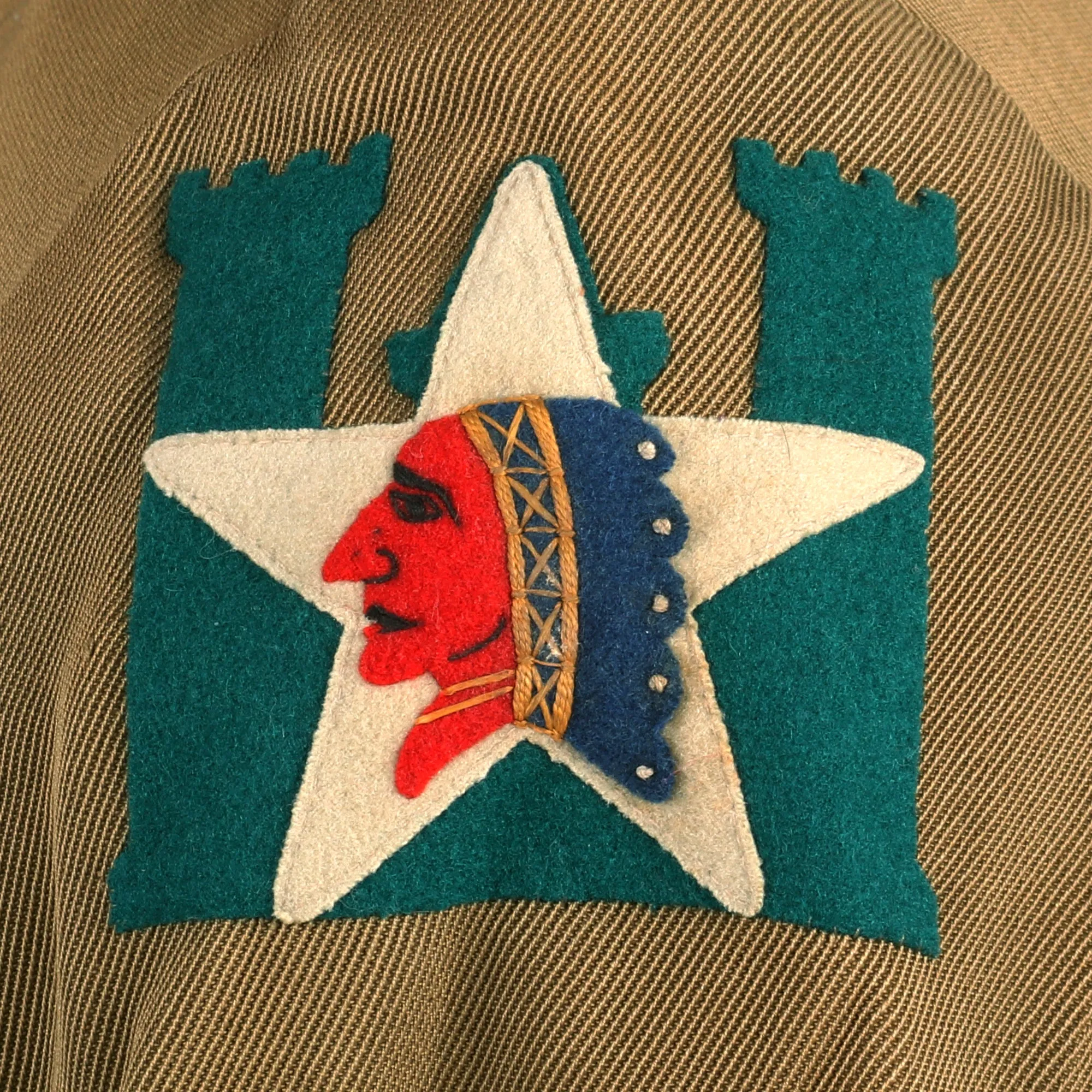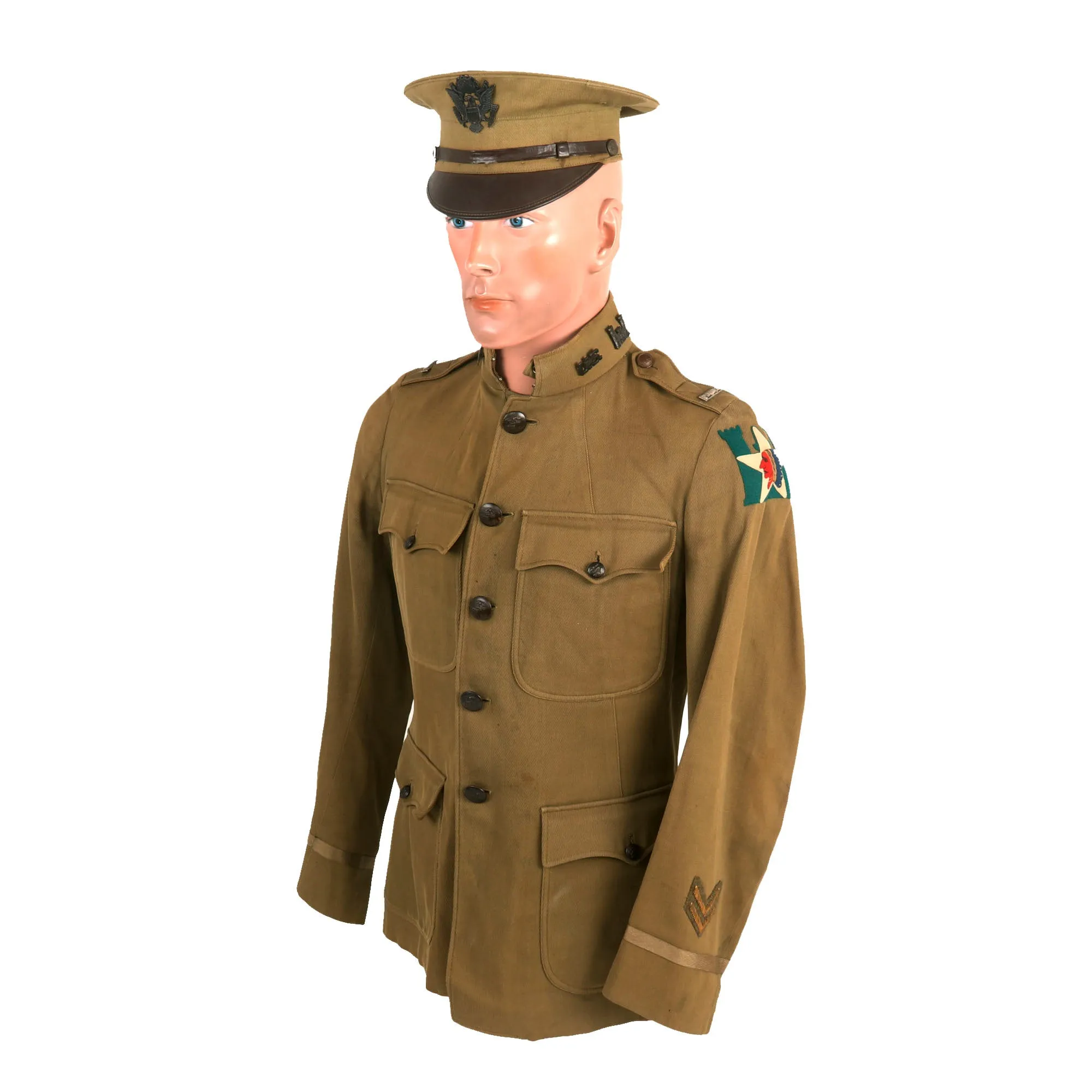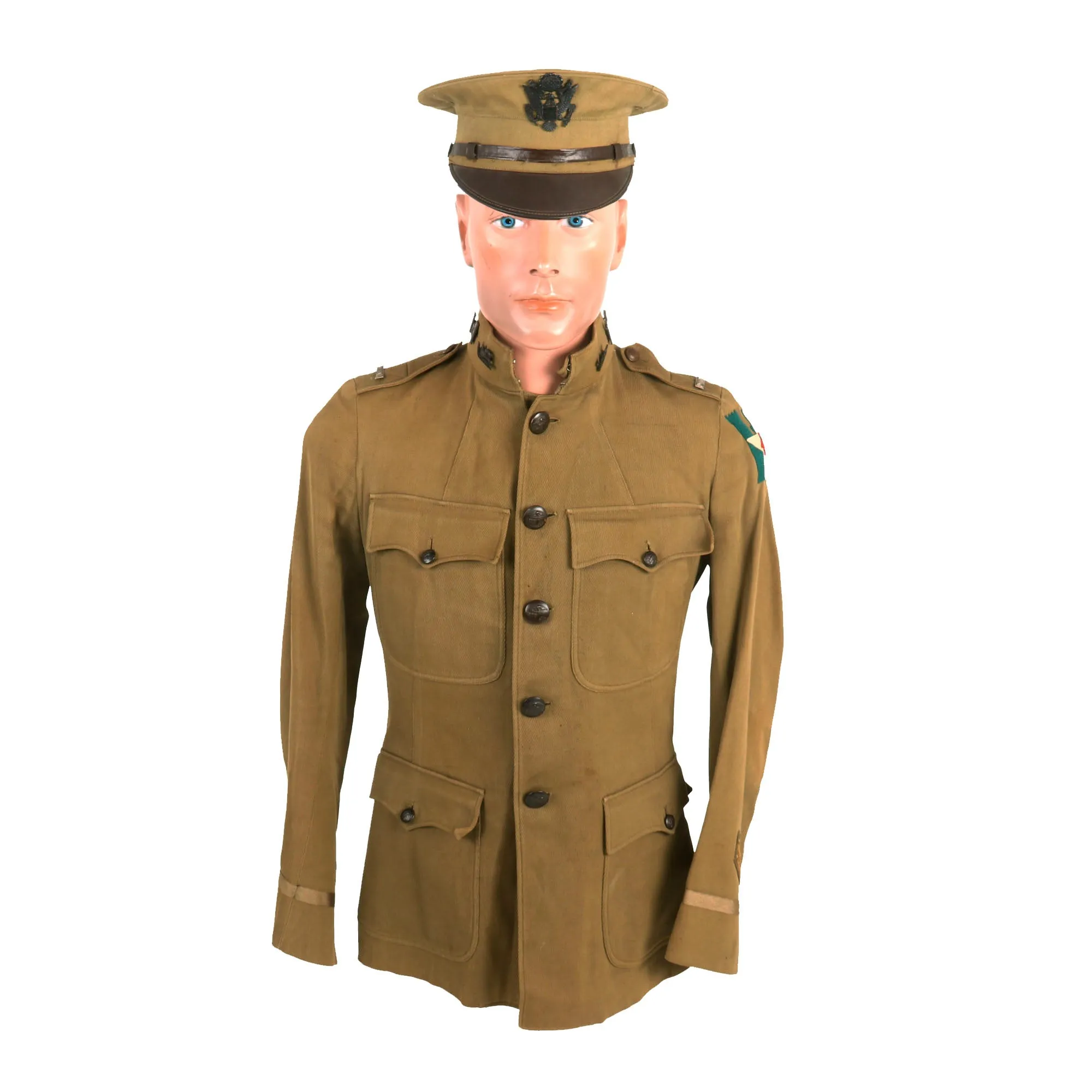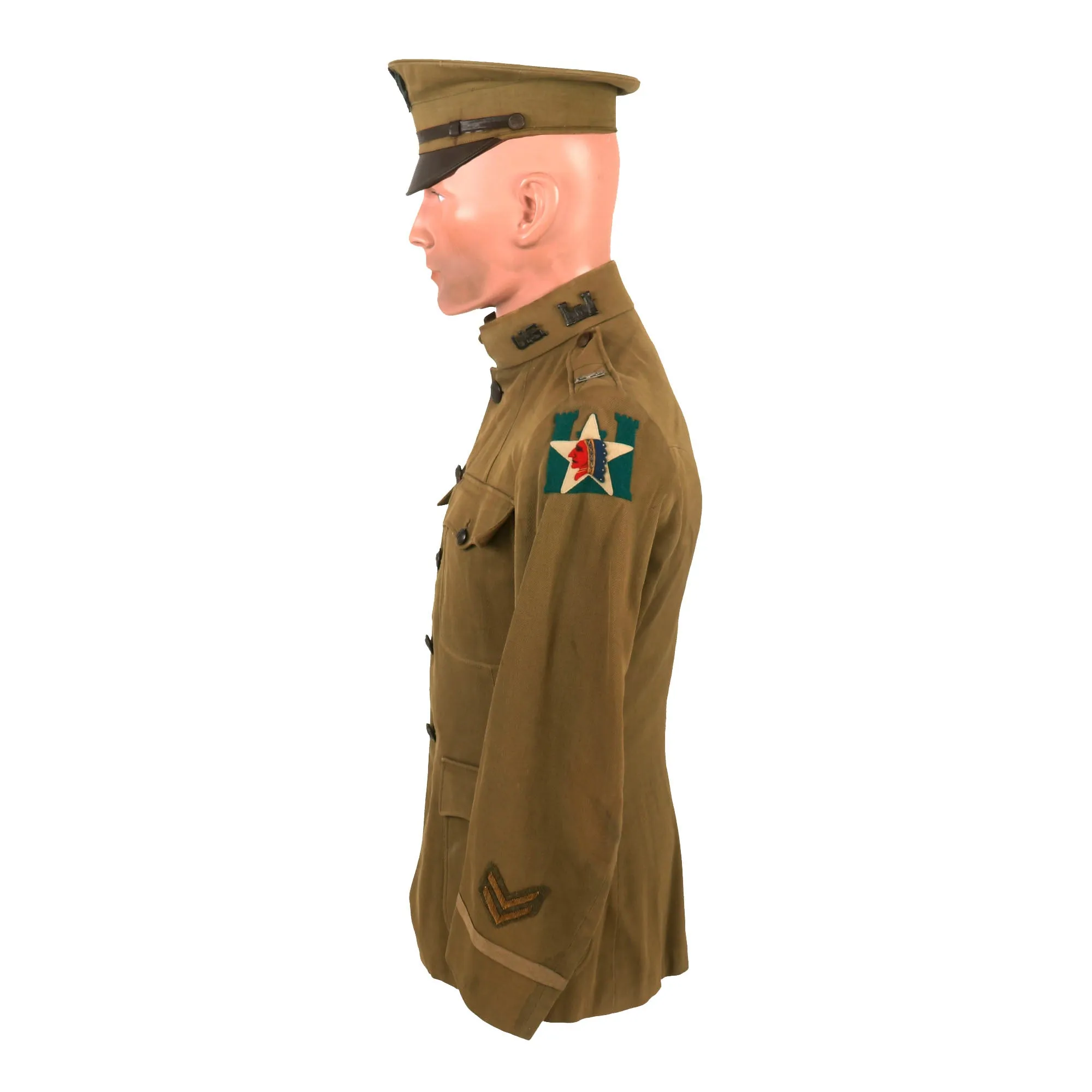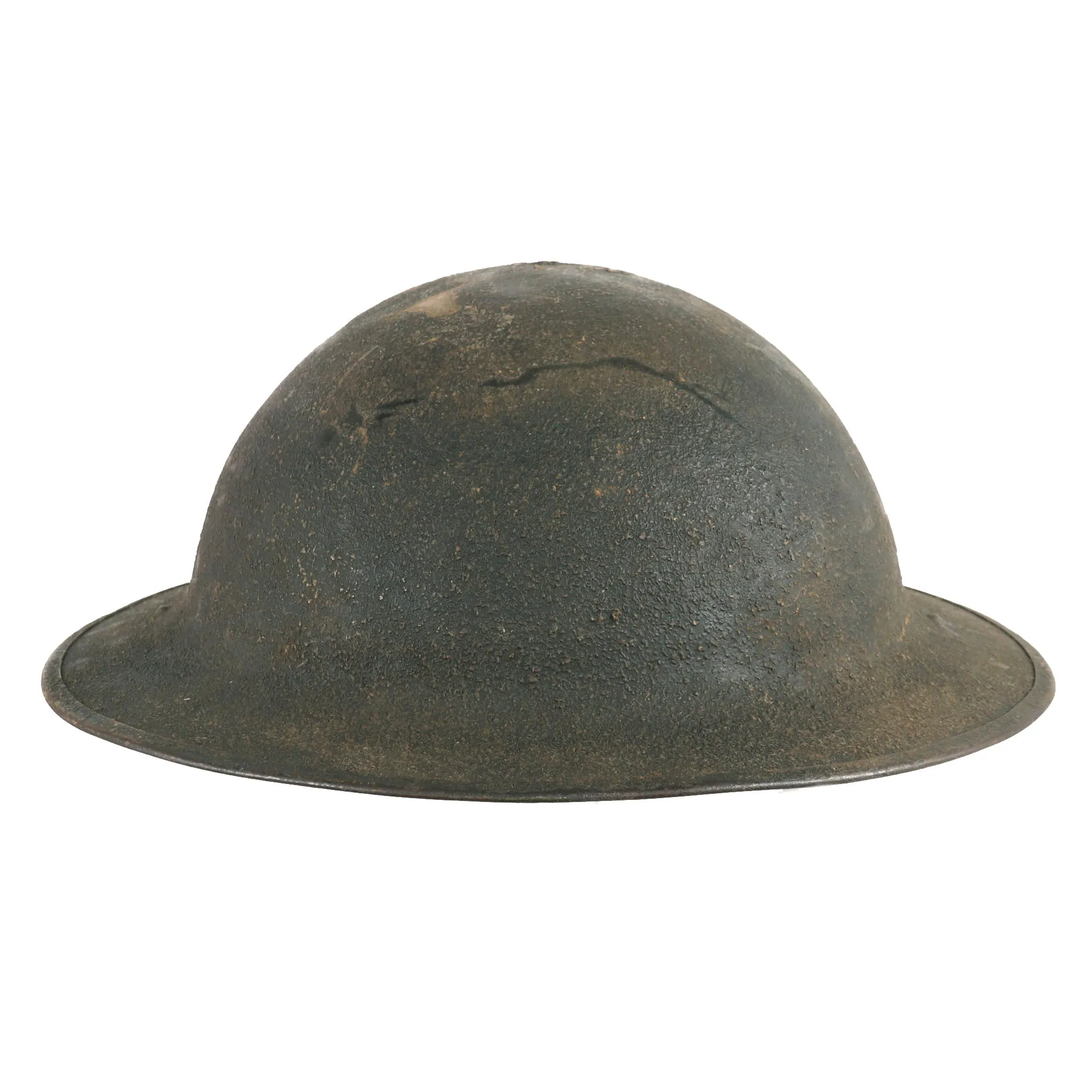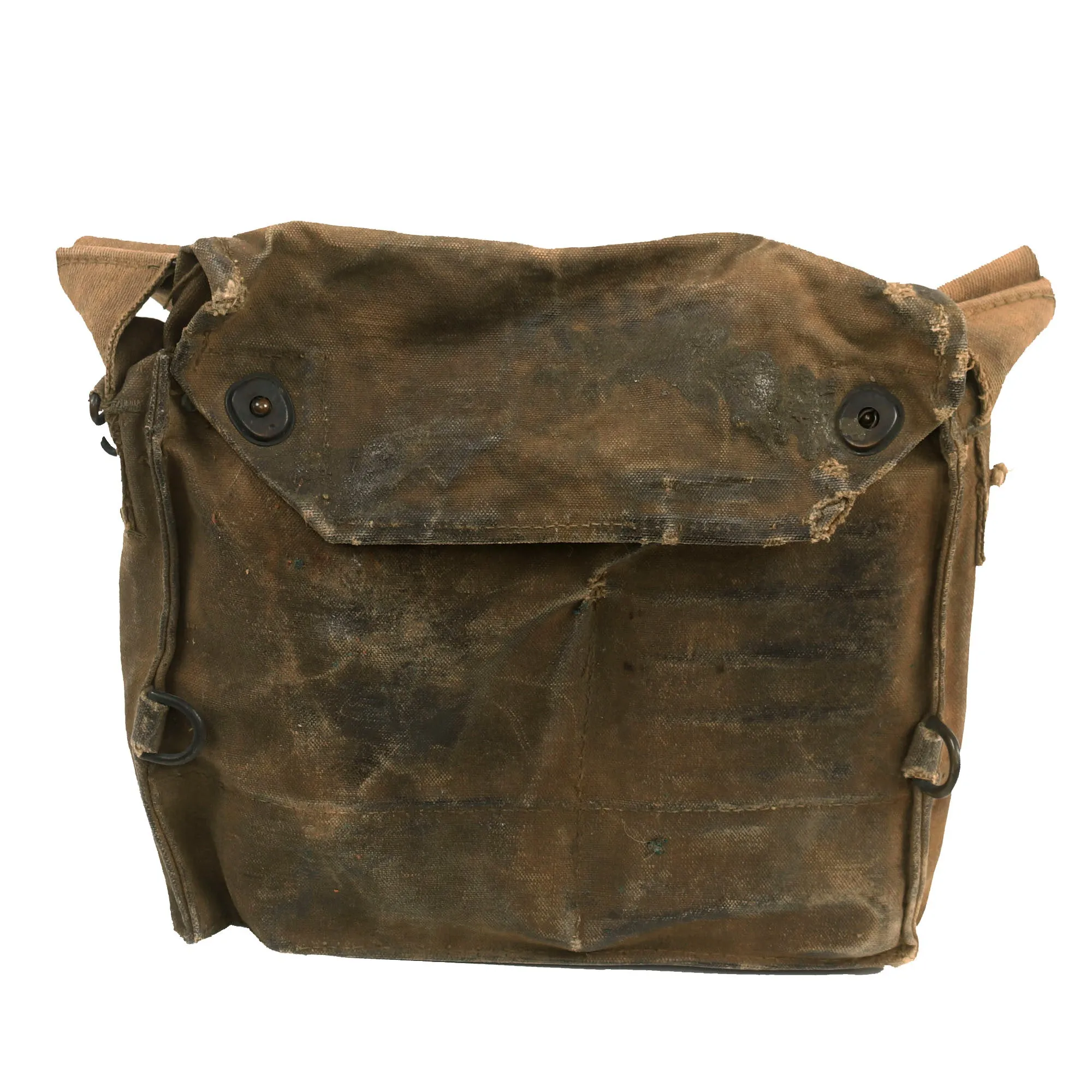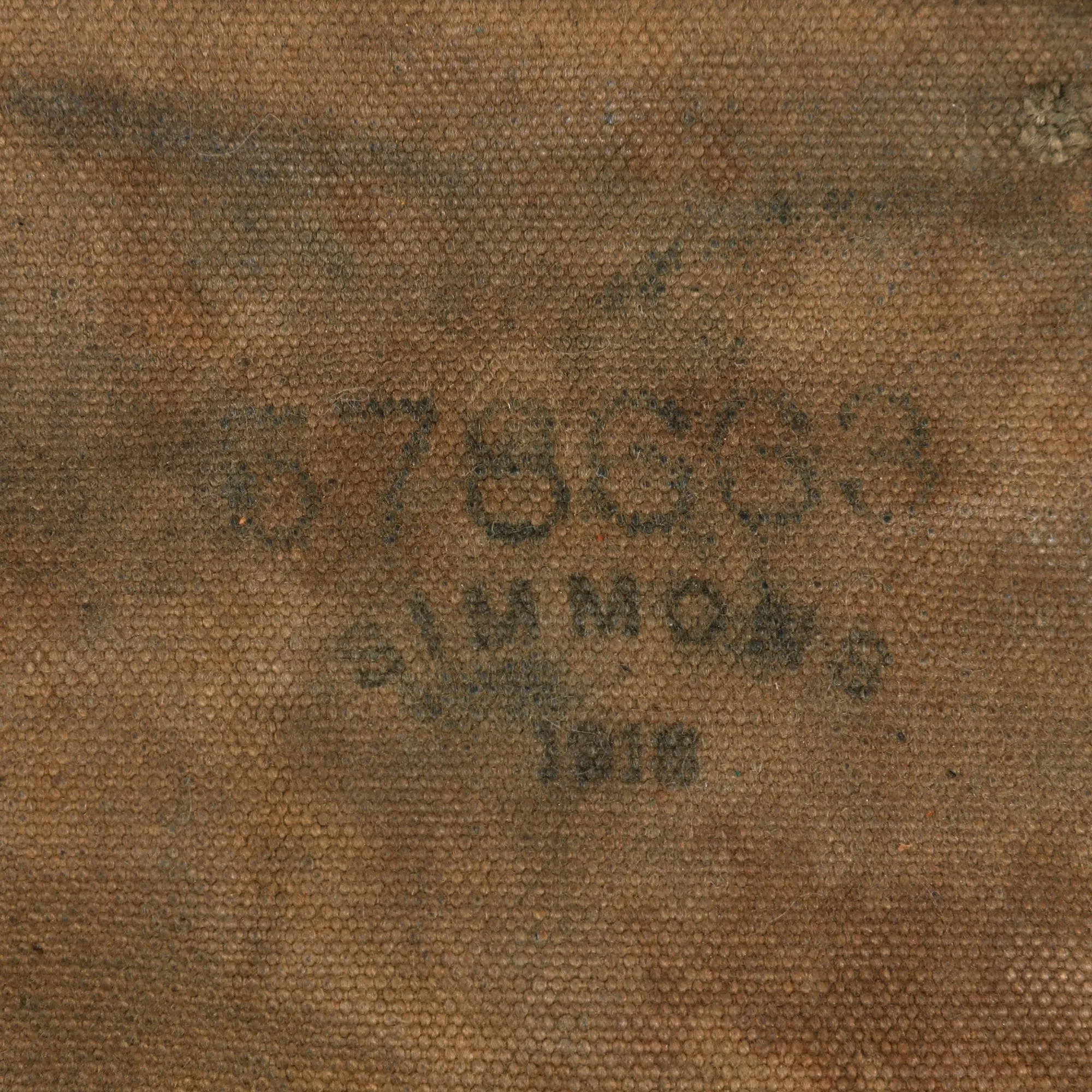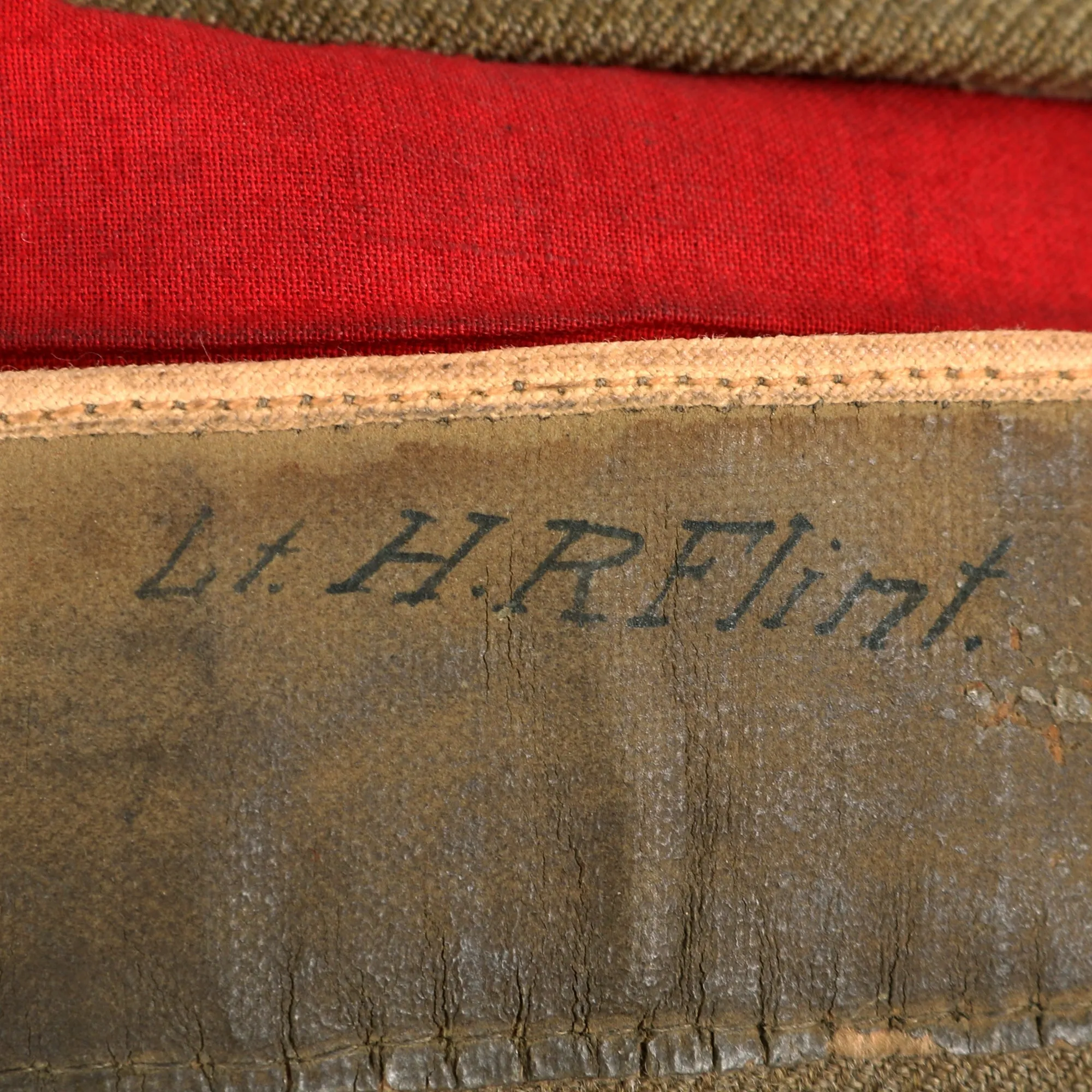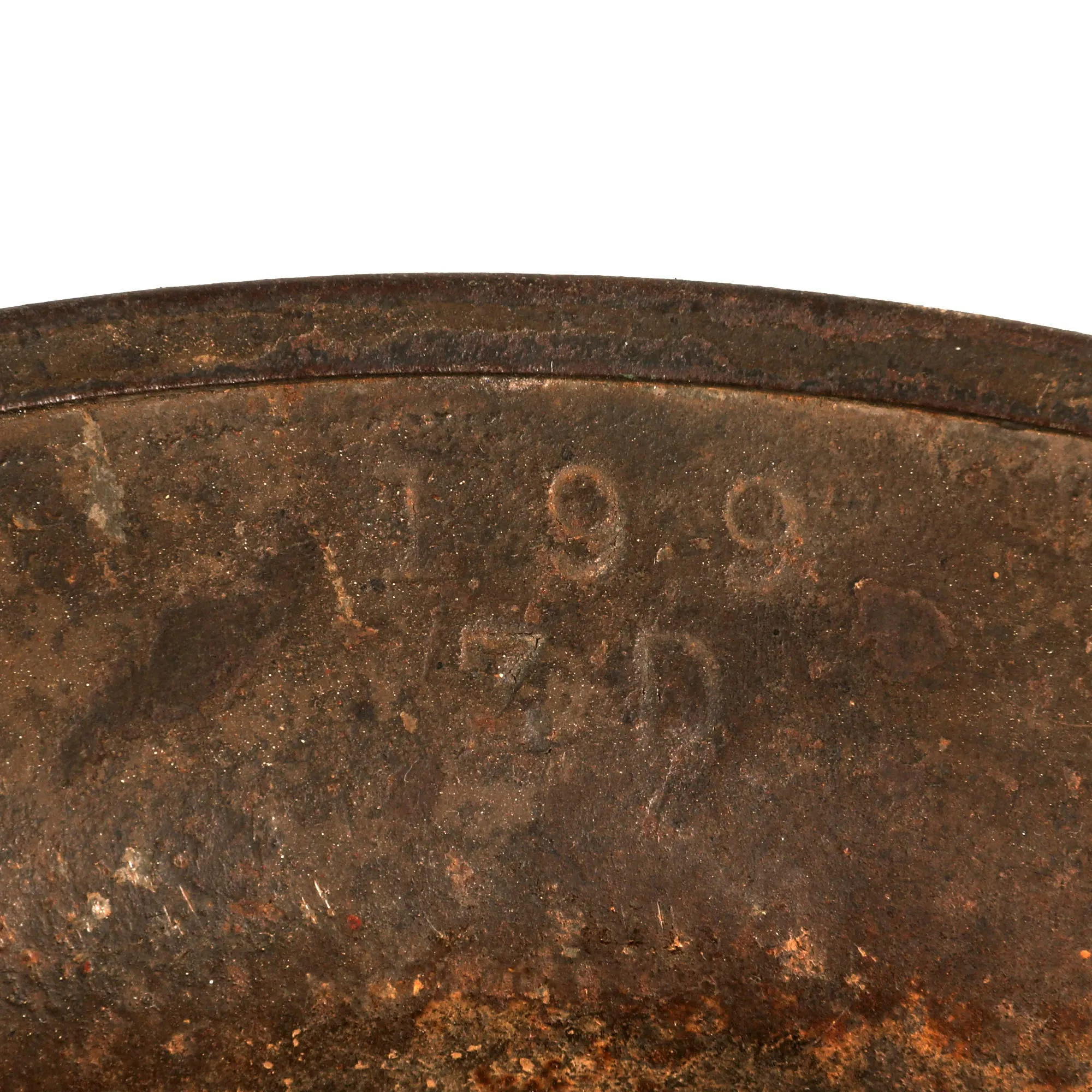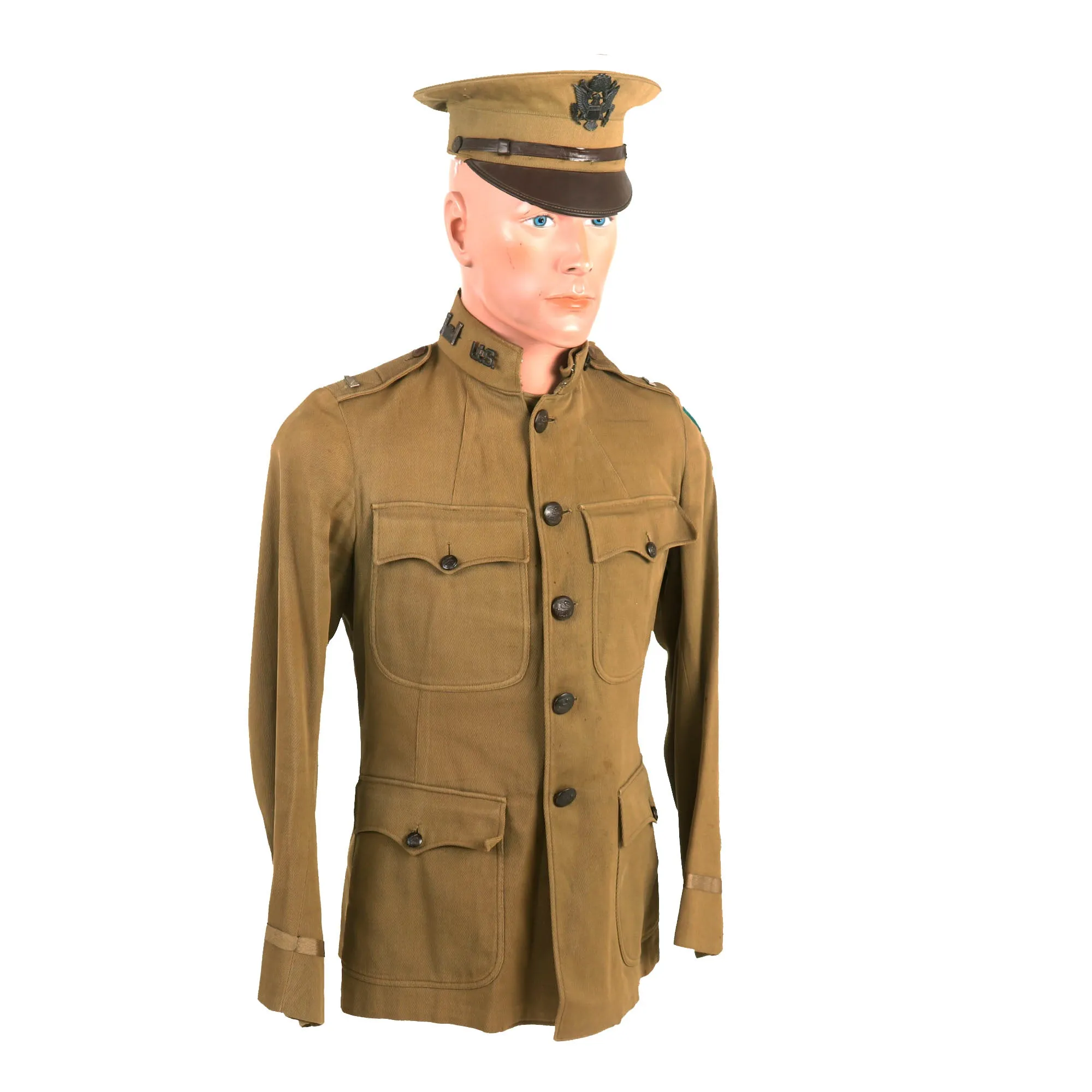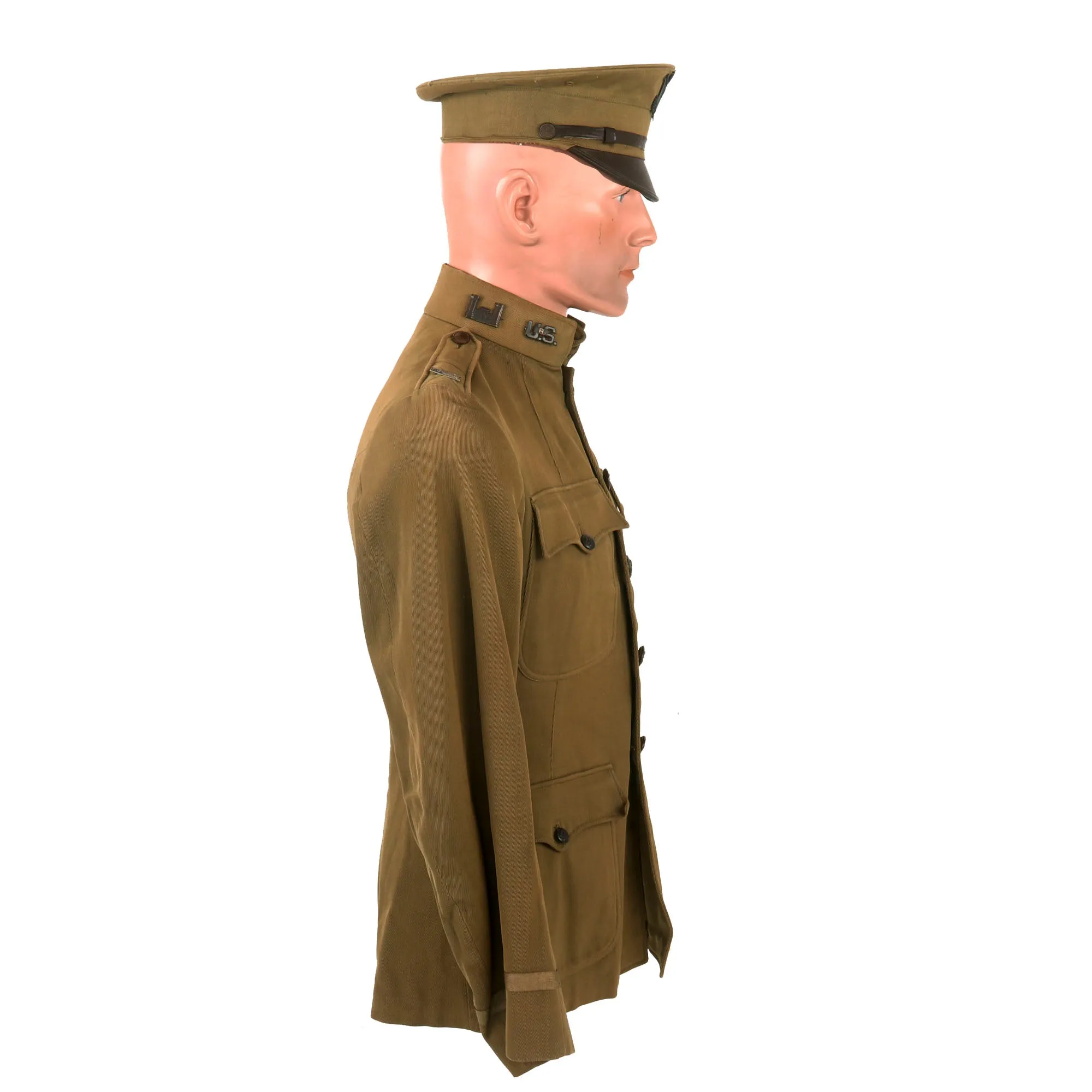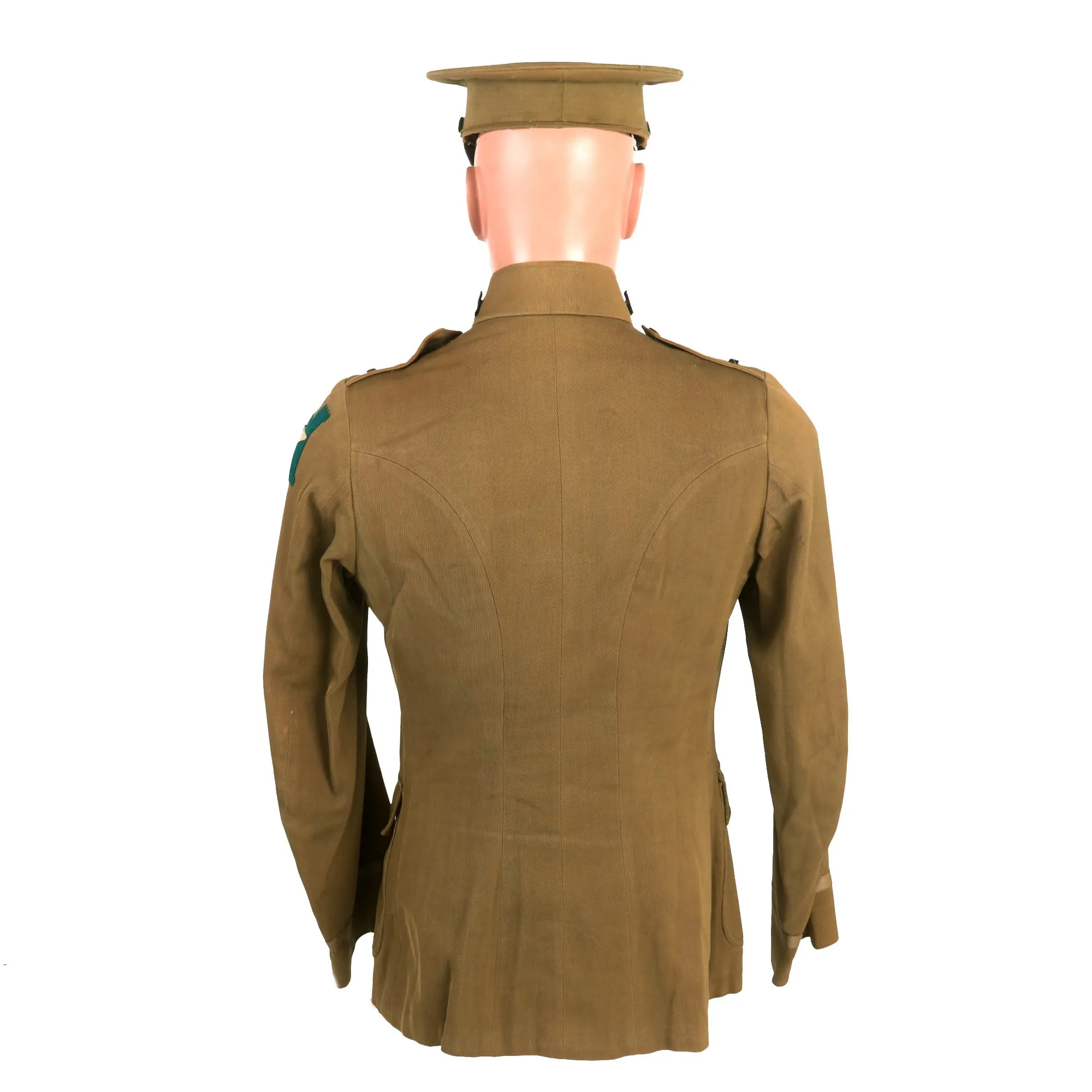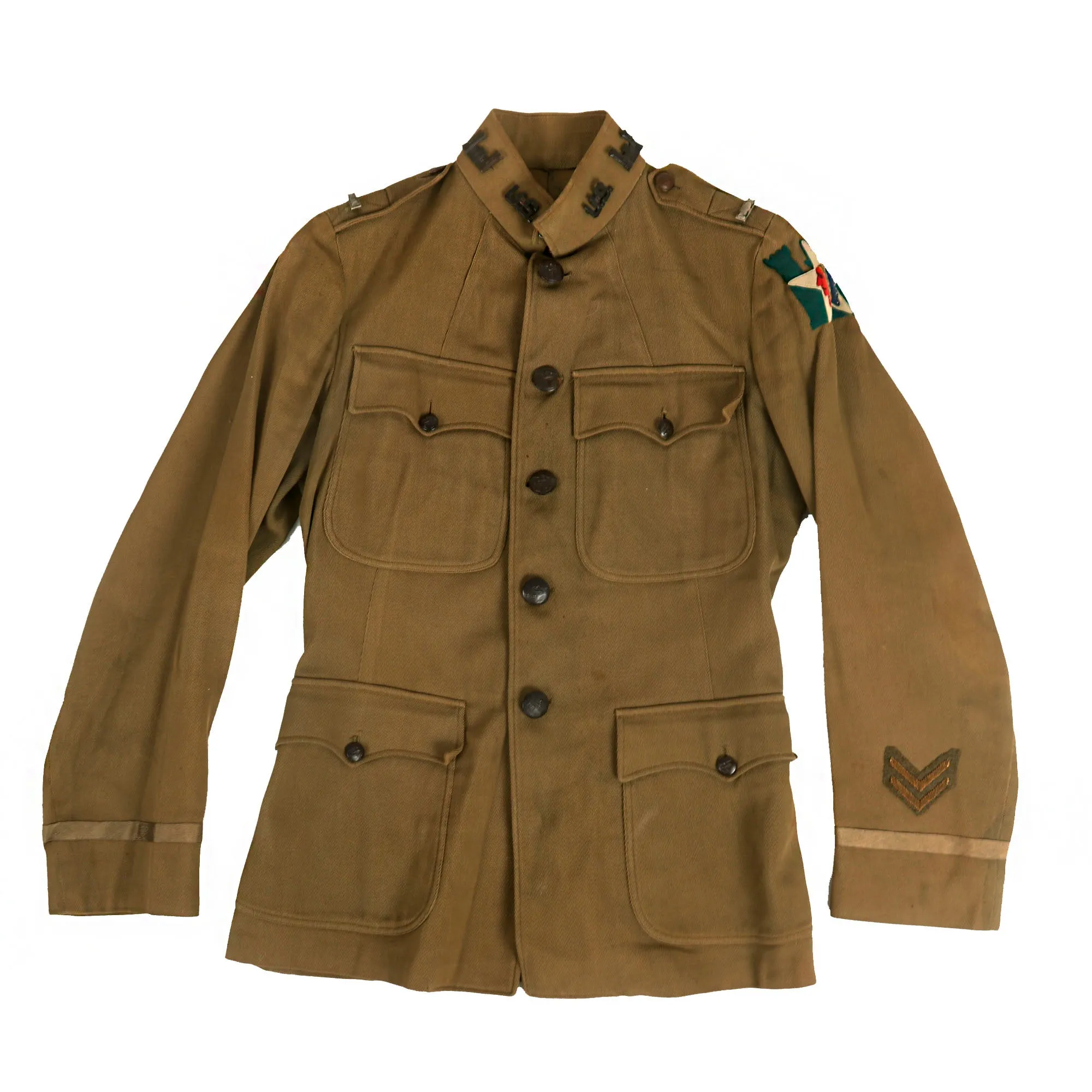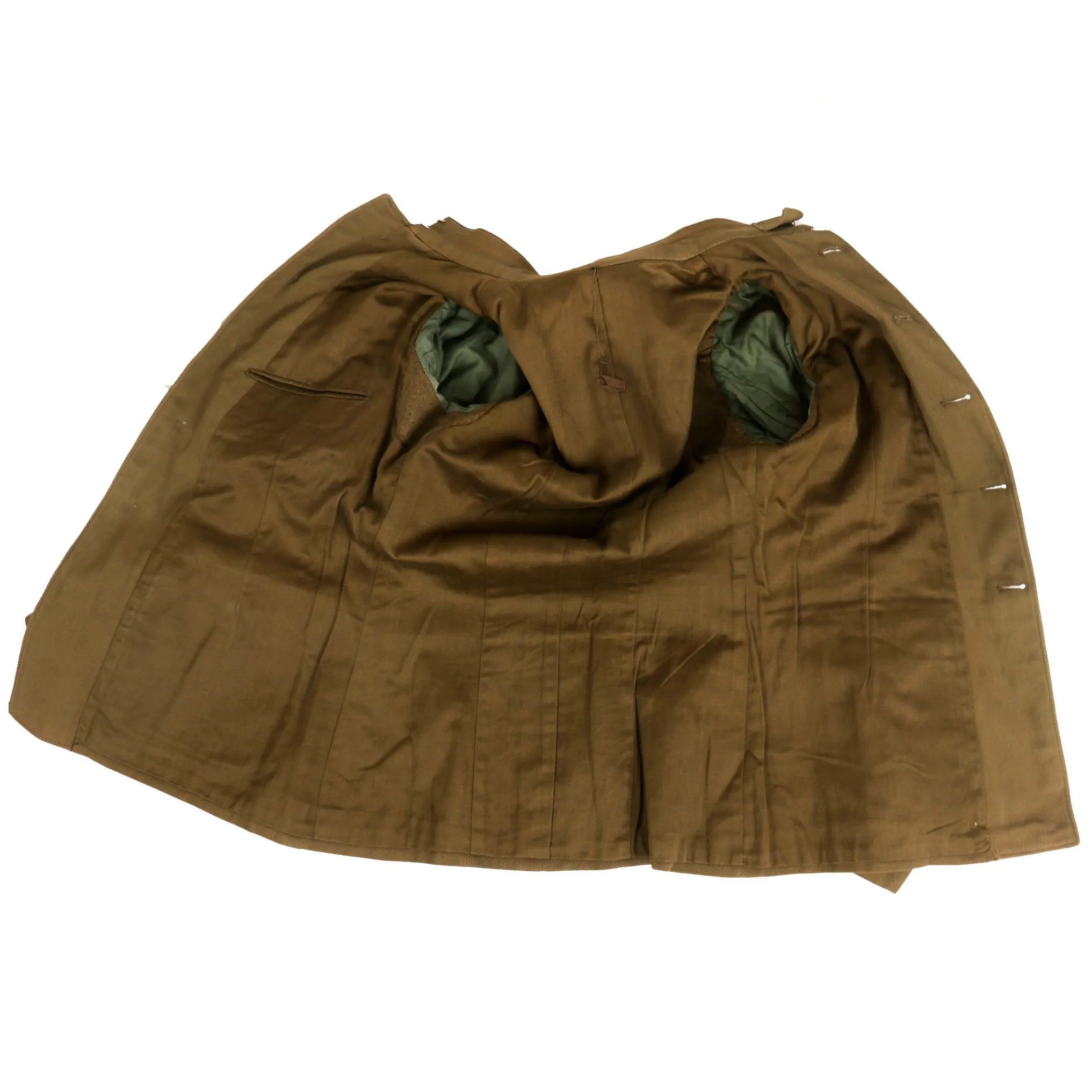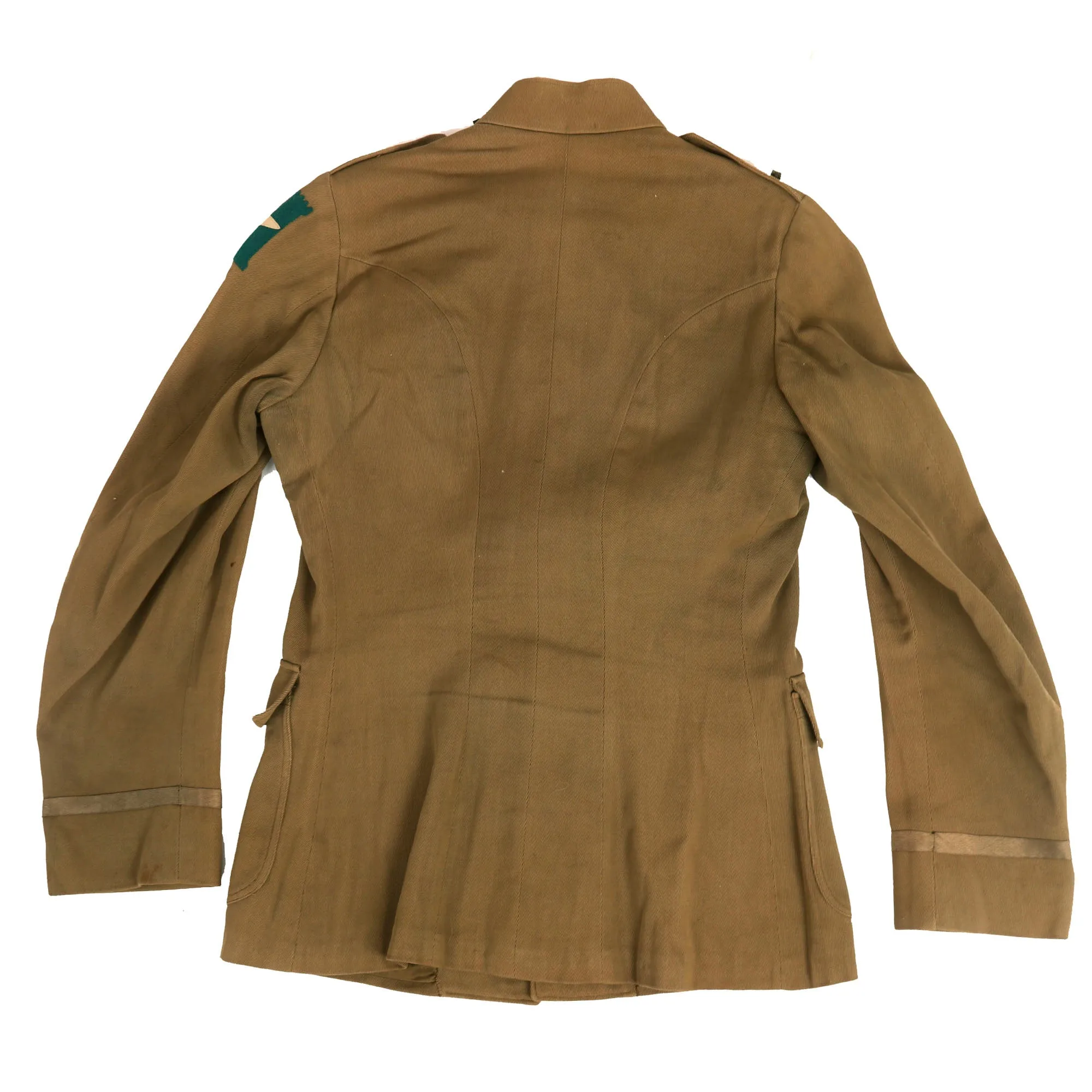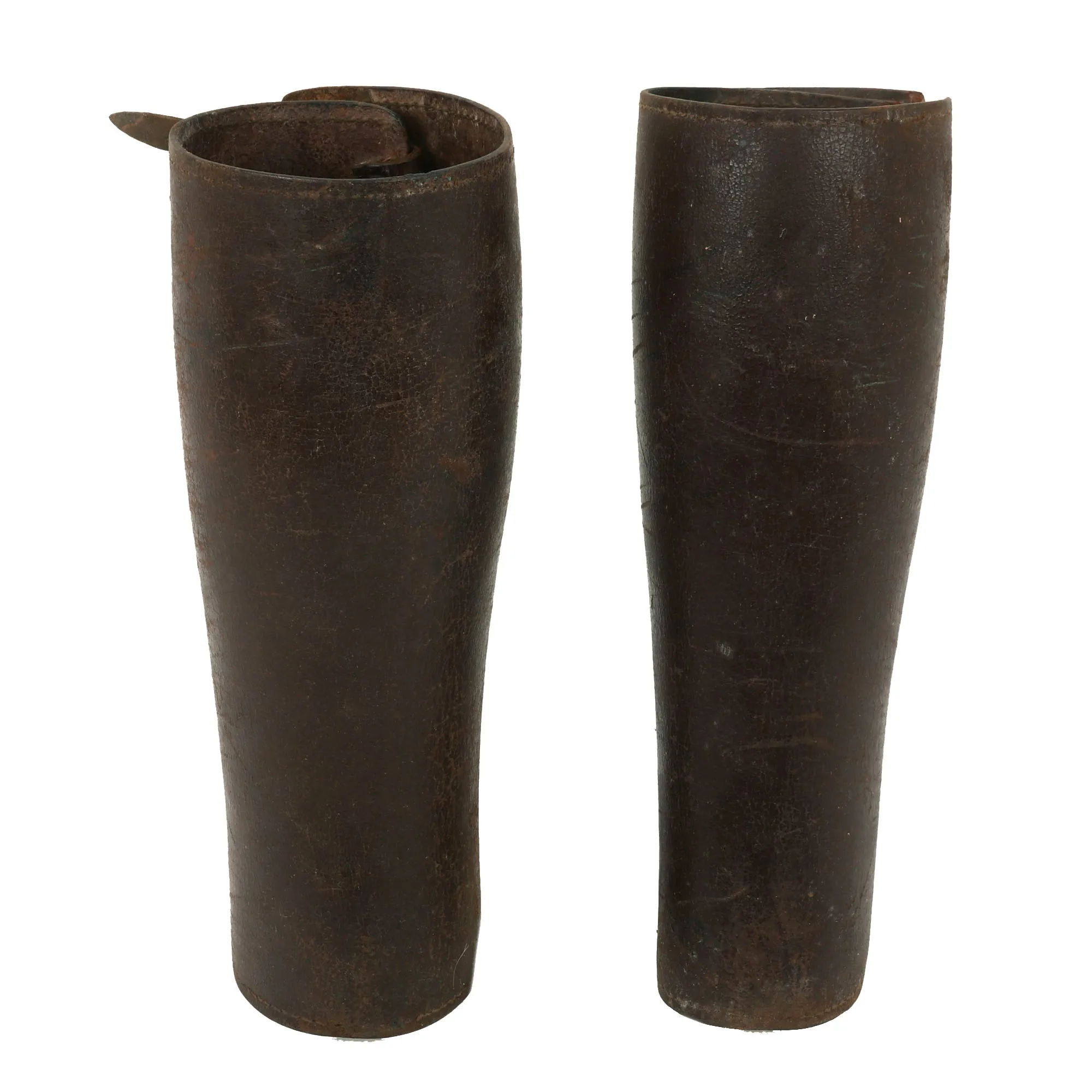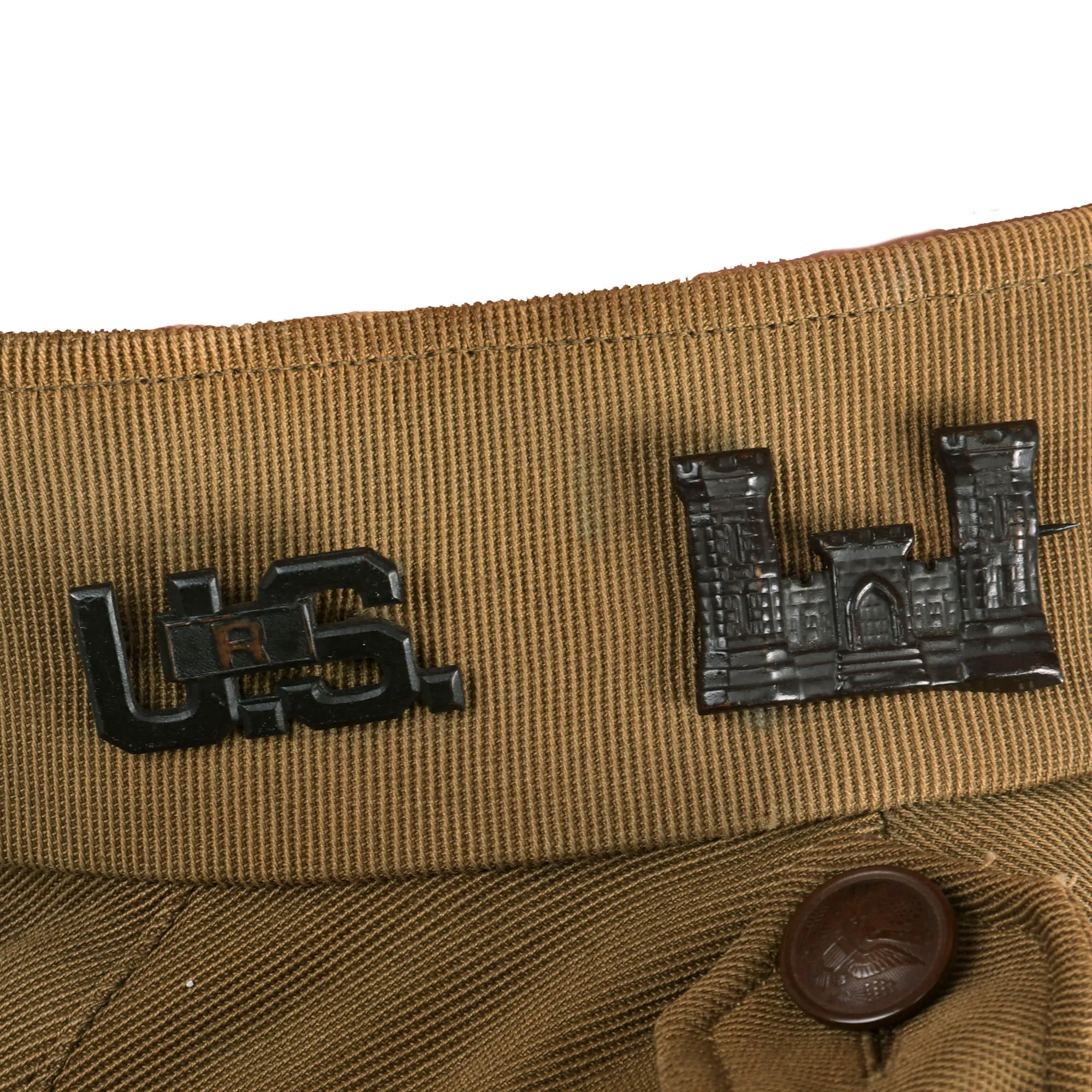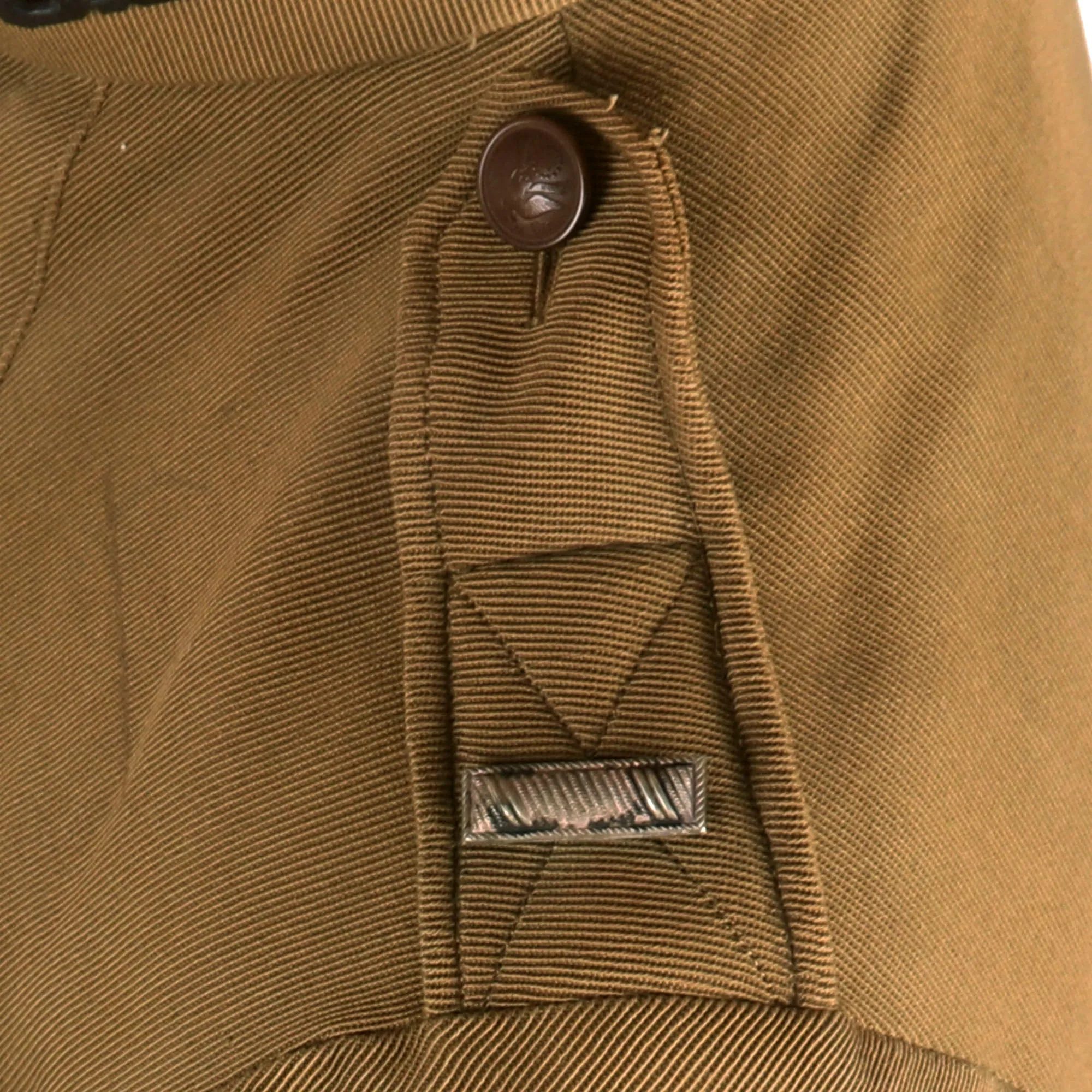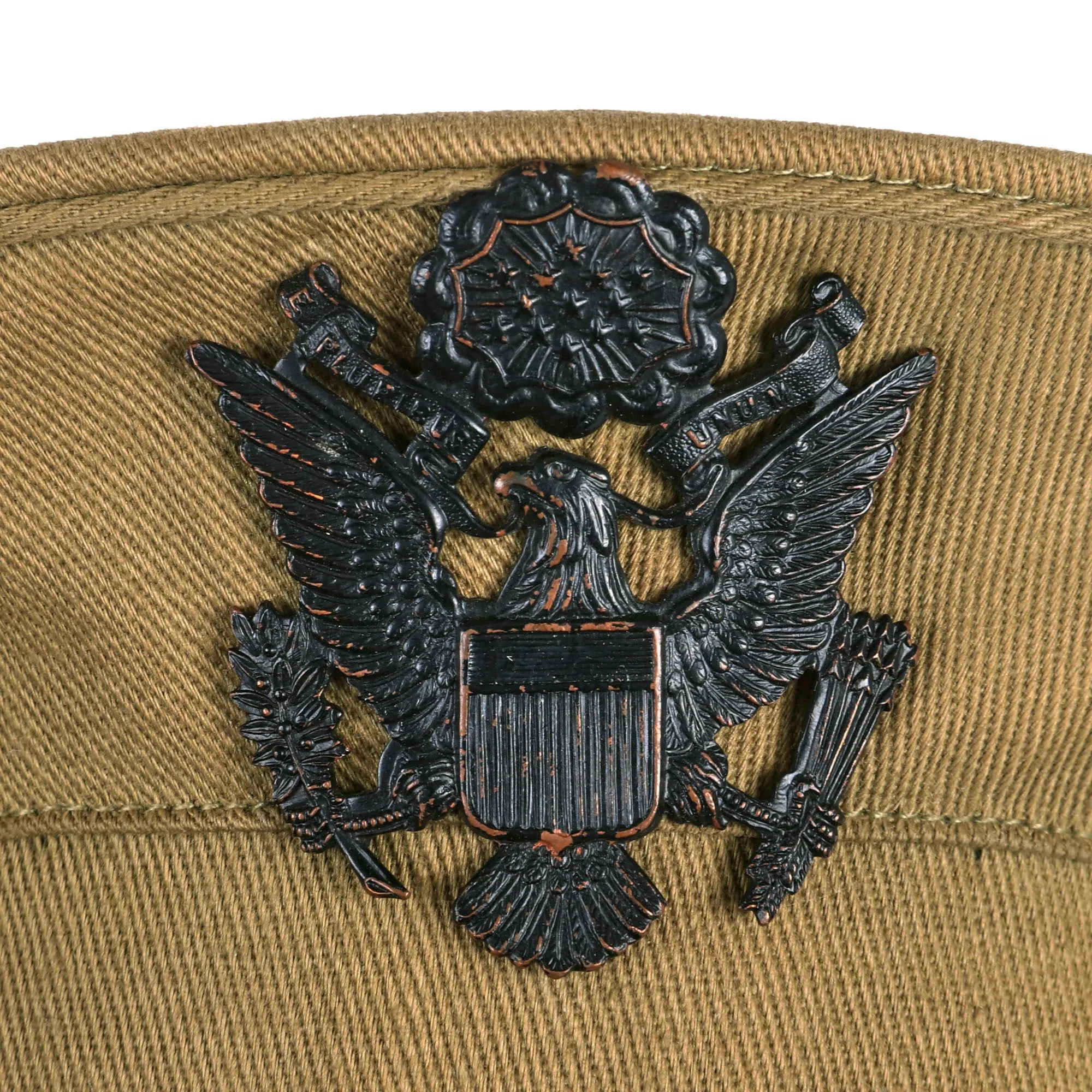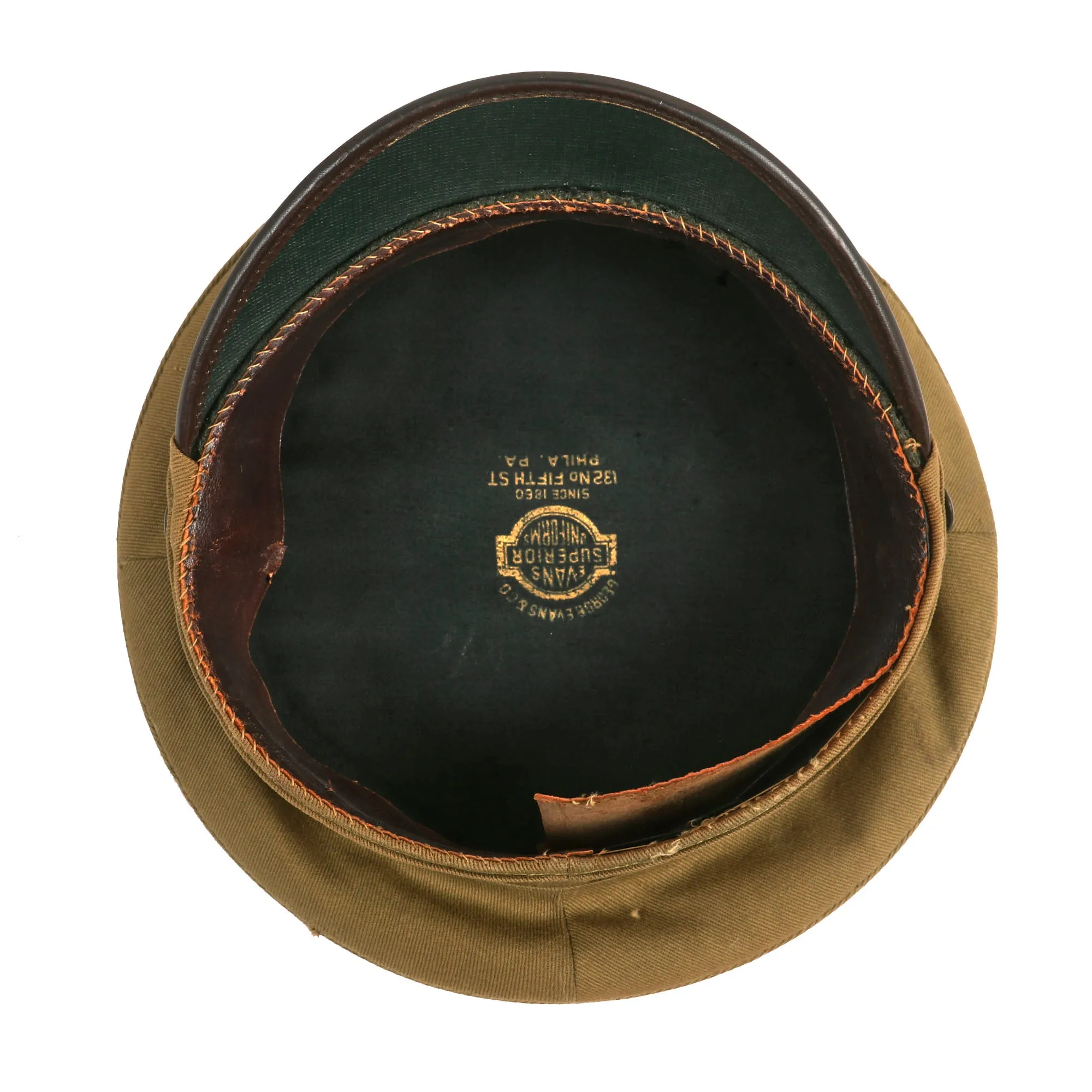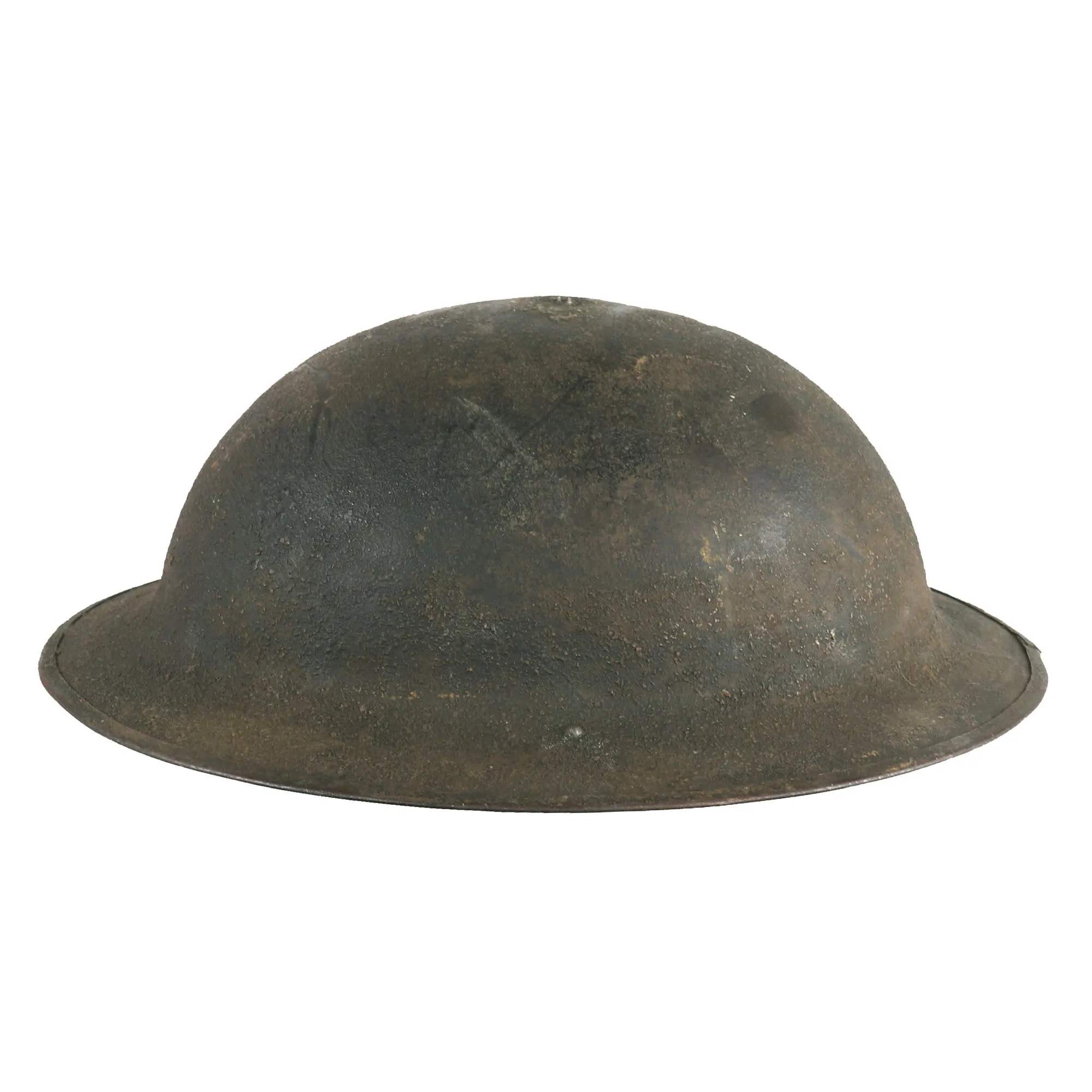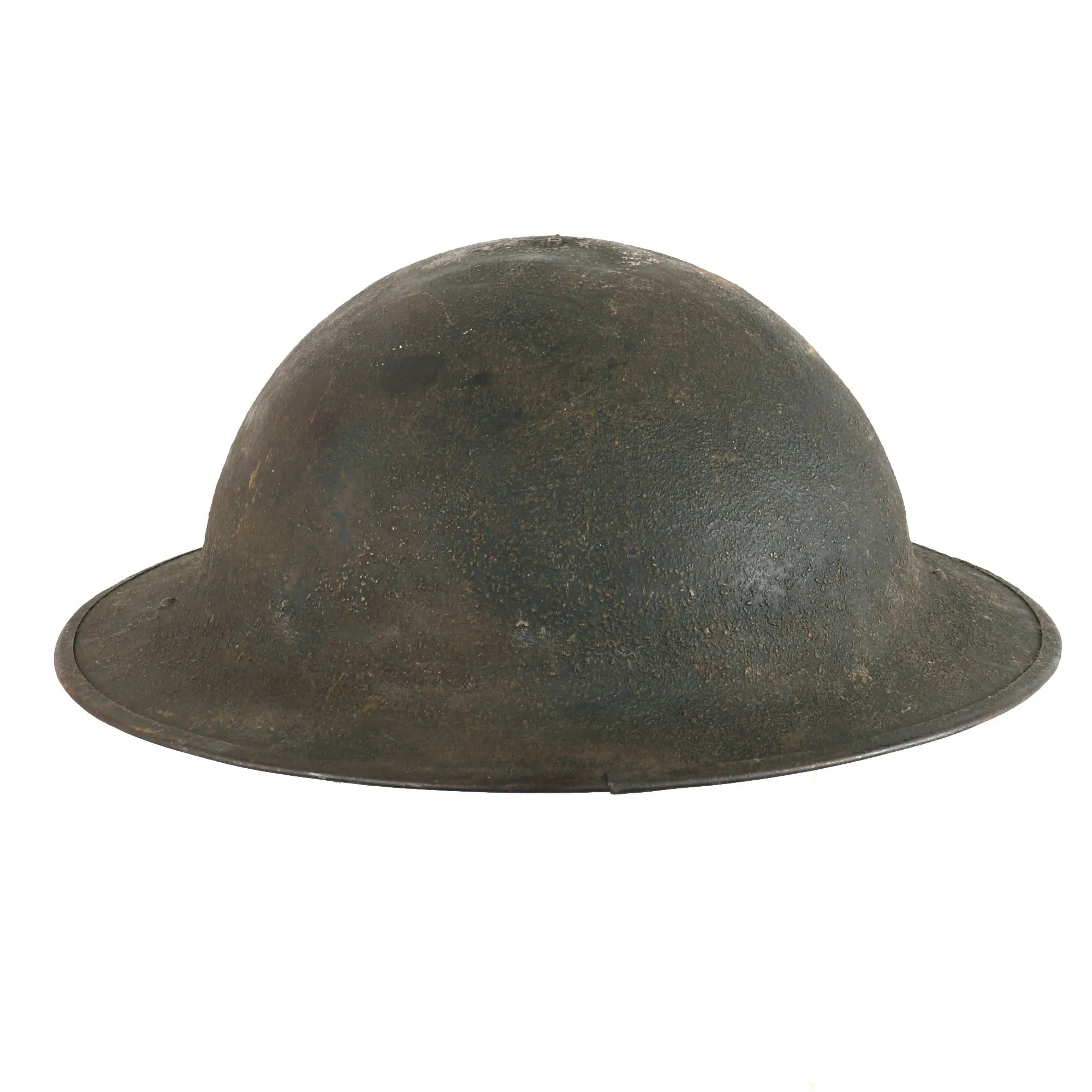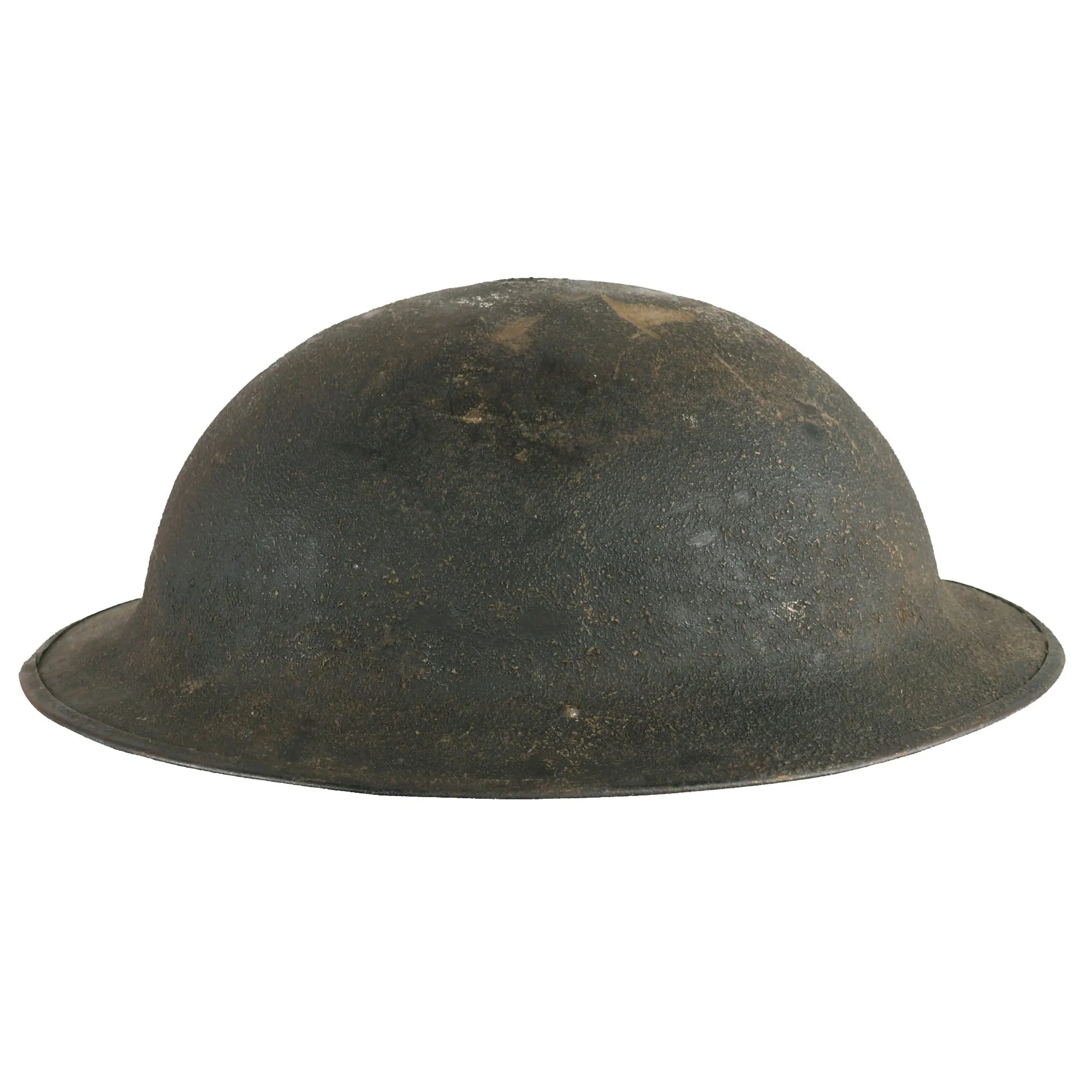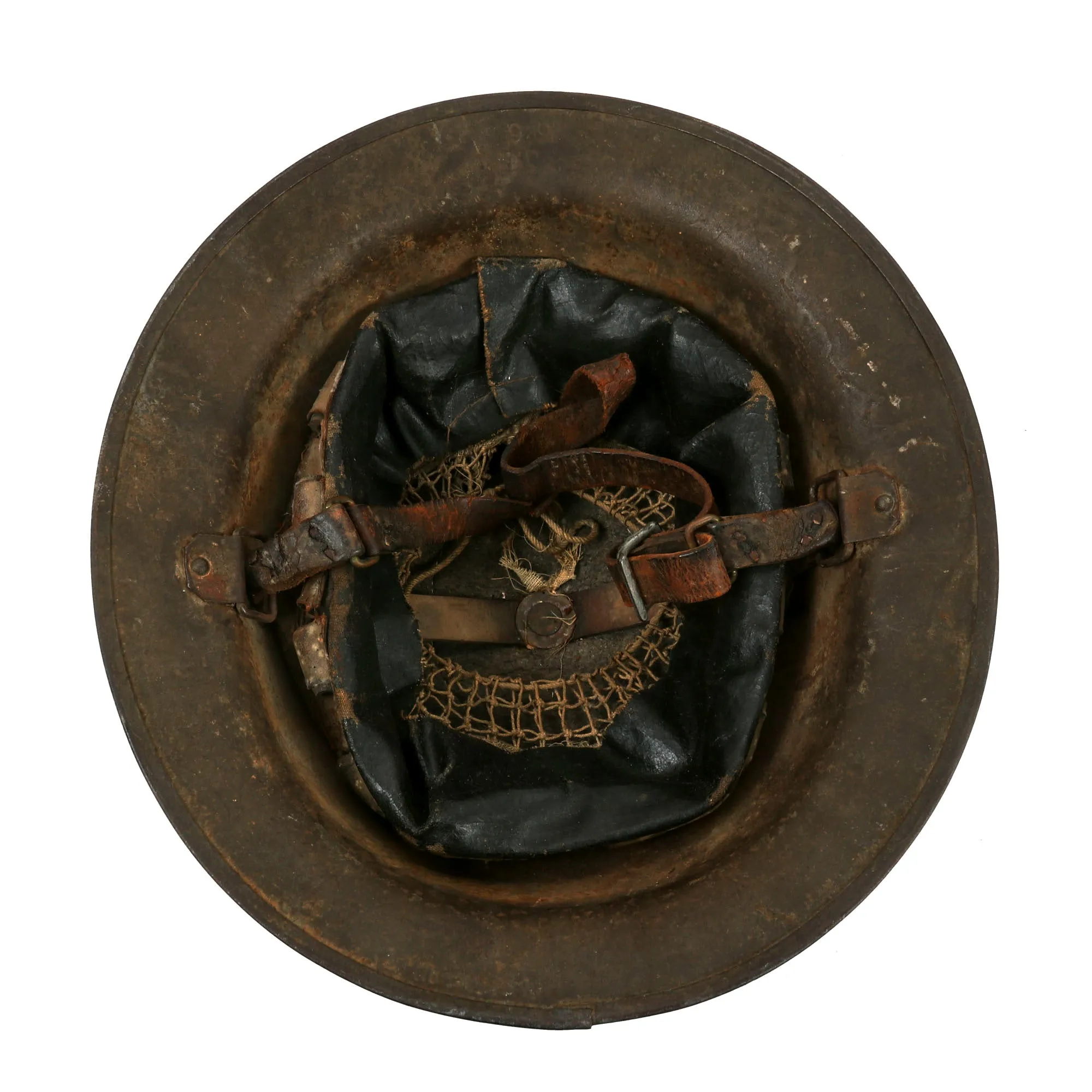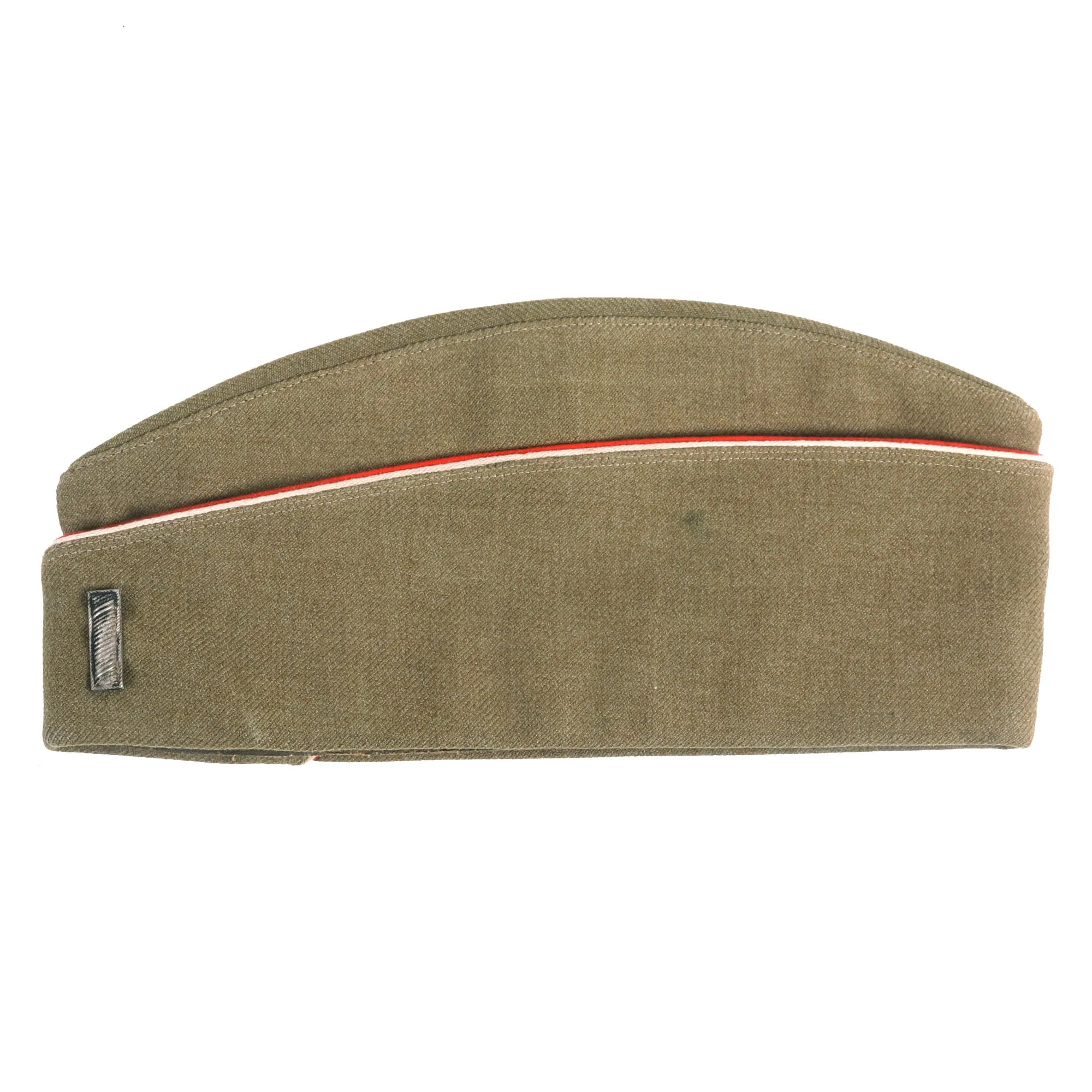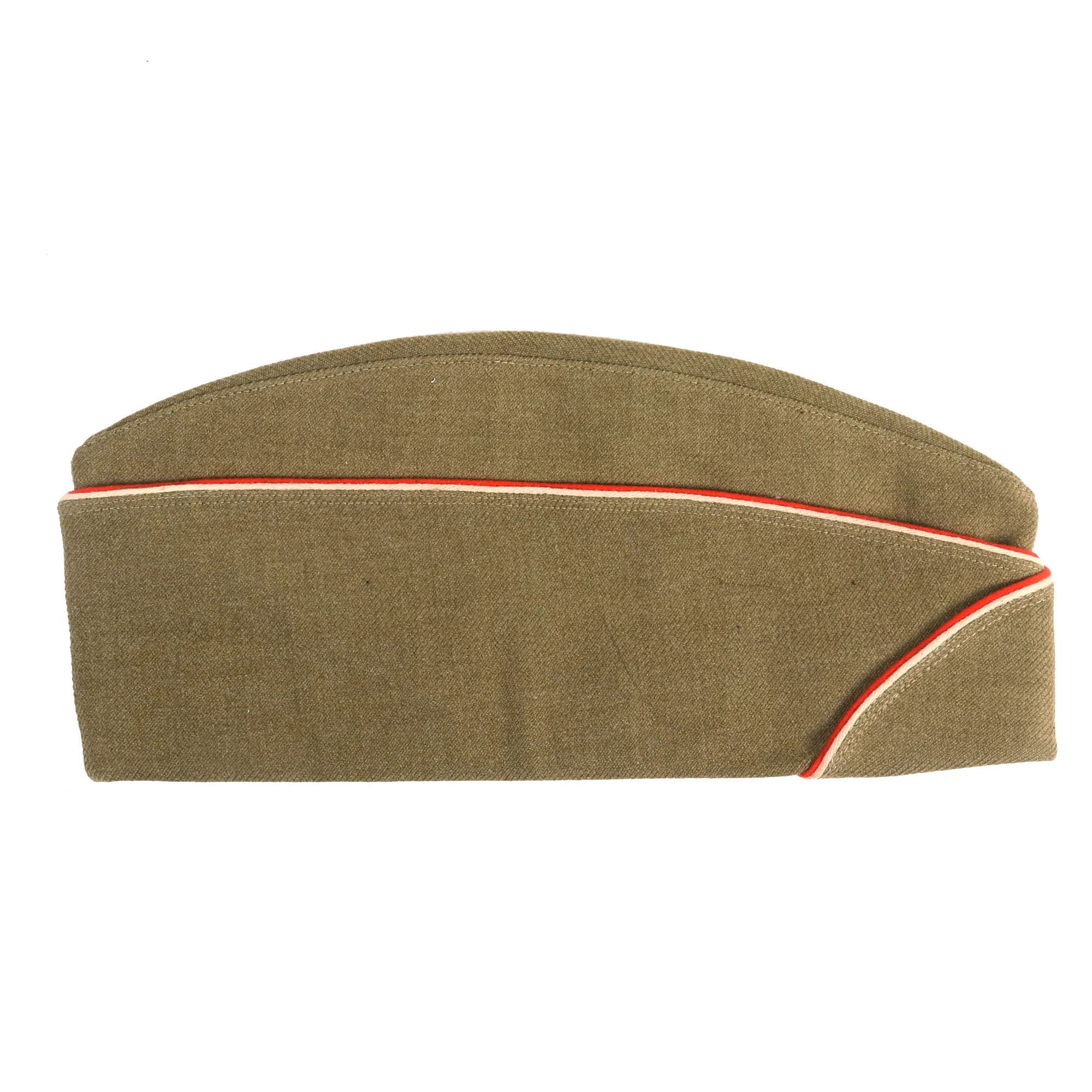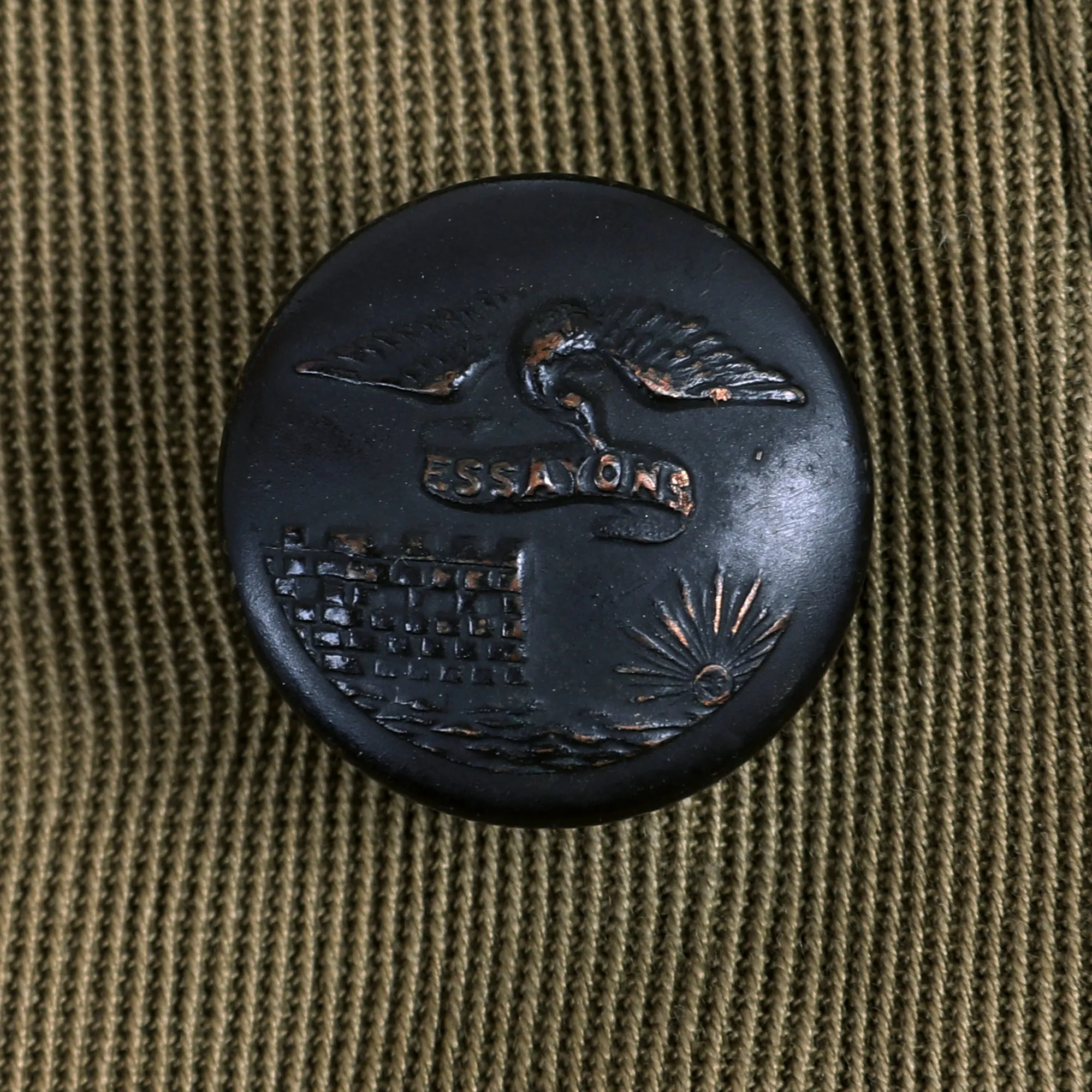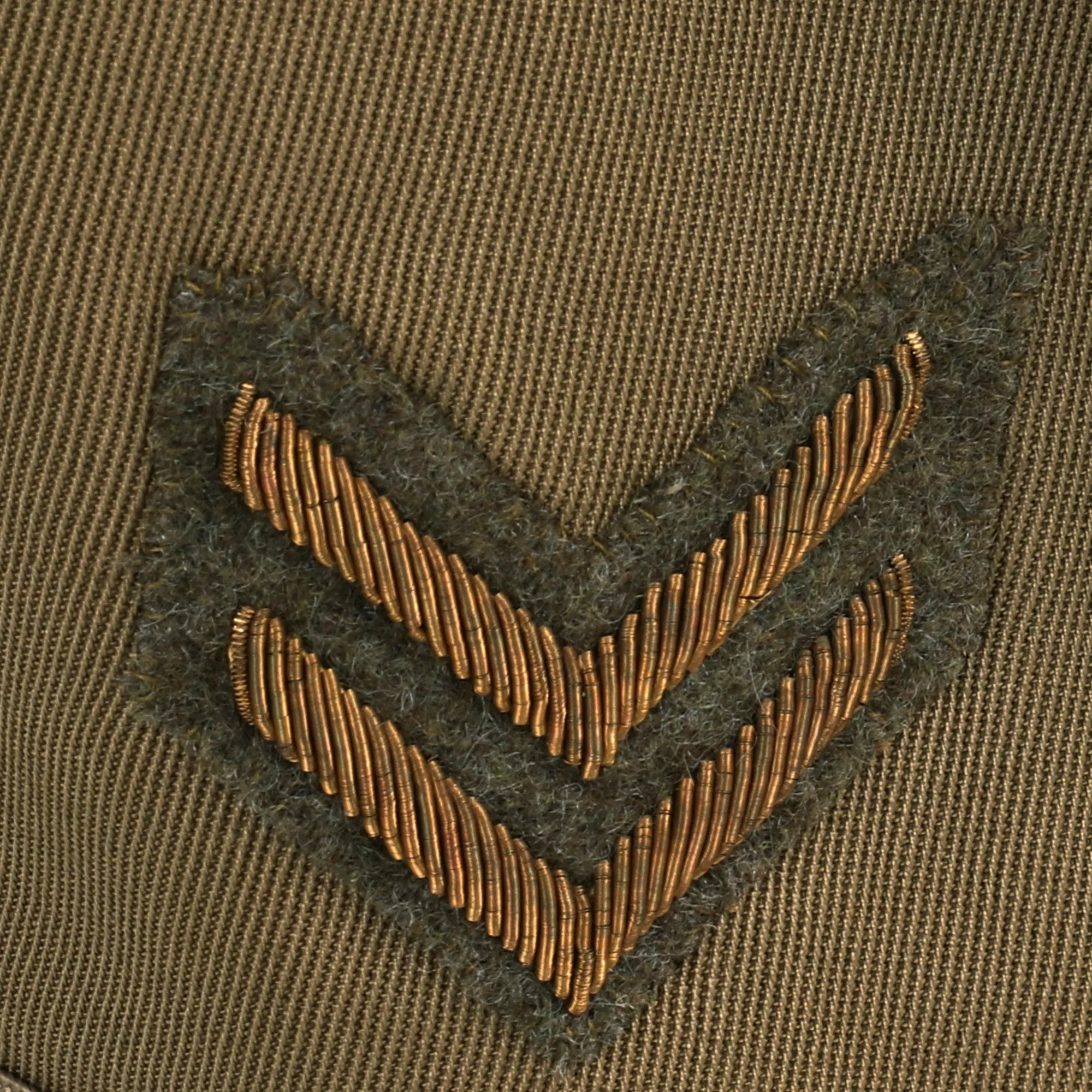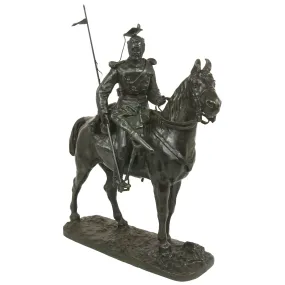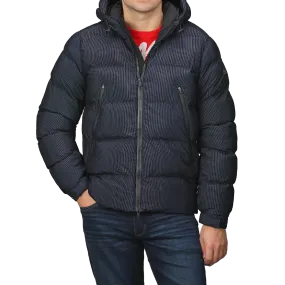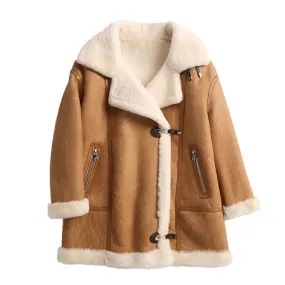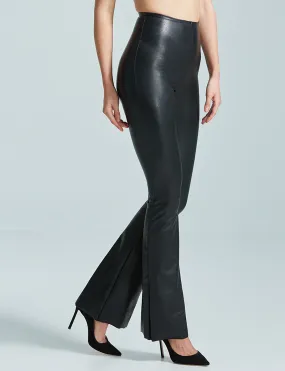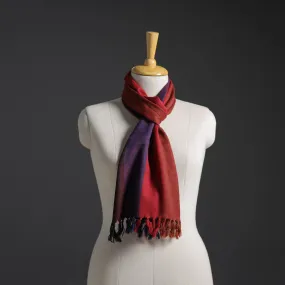Original Item: Only One Available: This is a phenomenal 2nd Division officer’s uniform with a gorgeous hand-stitched Indian head patch. This prestigious grouping is named to Lieutenant H. R. Flint of the 2nd Engineering Train, 2nd Engineer Regiment, 2nd Division.
This is a stunning officer’s uniform grouping named to 1st Lieutenant H. R. Flint, 2nd Engineering Train, 2nd Division.
The best part of this grouping is absolutely the hand-stitched 2nd Engineers patch on the left shoulder. The Indian head is a very rare detailed variant with no visible mothing. The jacket also has very rare officer’s engineer buttons as opposed to traditional eagle buttons. US Reserve & Engineer officer’s insignia, with faux bullion 1st Lieutenant bars on each shoulder. The jacket has two overseas chevrons, denoting 12-17 months overseas. Included with the uniform is his officer’s summer weight visor cap.
Also included in the grouping are Flint’s red & white piped officer’s overseas cap, red and white piping signifying an Engineer officer. The cap is named Lt. H. R. Flint on the sweatband. Flint’s M1917 helmet is also included, with a full liner and chinstrap, although the chinstrap is weak. Also included are his officer’s leather gaiters and his gas mask and bag.
The 2nd Division in World War I
The 2nd Engineer Regiment was deployed to the Mexican border prior to US involvement in the First World War. On the US entry to the war the 2nd Engineers deployed to the Western Front in France as the organic Engineering element of the 2nd Division.
The 1st and 2nd battalions of the 2nd Engineers participated in the Battle of Belleau Wood in direct support of the 4th Marine Brigade of the US Army's 2nd Division. Elements of the 2nd Engineers provided engineering support and fought as infantry throughout the battle. "There was always good feelings between the Marines of the 2d Division and the Regular Army units that formed it, but the Marines and the 2d Engineers – 'Say, if I ever get a drink, a 2d Engineer can have half of it! – Boy they dig trenches and mend roads all night, and they fight all day!'" -John Thomason.
The Second Infantry Division (Indianhead) patch is one of the most recognized unit emblems in the U. S. Army because of its distinctive design and 80 years of proud service by its Warriors. The origin of the patch goes back to the earliest day of the division’s history. While training with the French in 1917, Col. Herringshaw of the Service and Support Supply of the Second Infantry Division noticed that the French trucks were marked with symbols representing the unit to which each belonged.. He sponsored a contest among his men to design a symbol for his trucks. There were three winners: first prize winner was a design featuring an Indian Head: second prize went to a plain white star and the third prize was lost to history. The colonel was not completely satisfied and it is believed that, by chance, he combined the two symbols of the white star and the Indian head and liked what he saw.
Some theories say that the single star represented the state of Texas, while other claim the star is from the American flag. Regardless, the design was then sent to command headquarters for approval. Brig. Gen. Omar Bundy, division commander, not only approved the symbol but also ordered it put on his staff car. The size and shape of the patch changed in October 1918 when Maj Gen. John A LeJeune, the new division commander, decided the color of the cloth behind each patch should represent the different divisional units. He also directed that the Indian head was to be patterned after the Indian on the $10 gold piece.
After World War I, the background of the patch was adopted from the design of the American shield. In World War II it finally took the shape, size, and color it has today.




